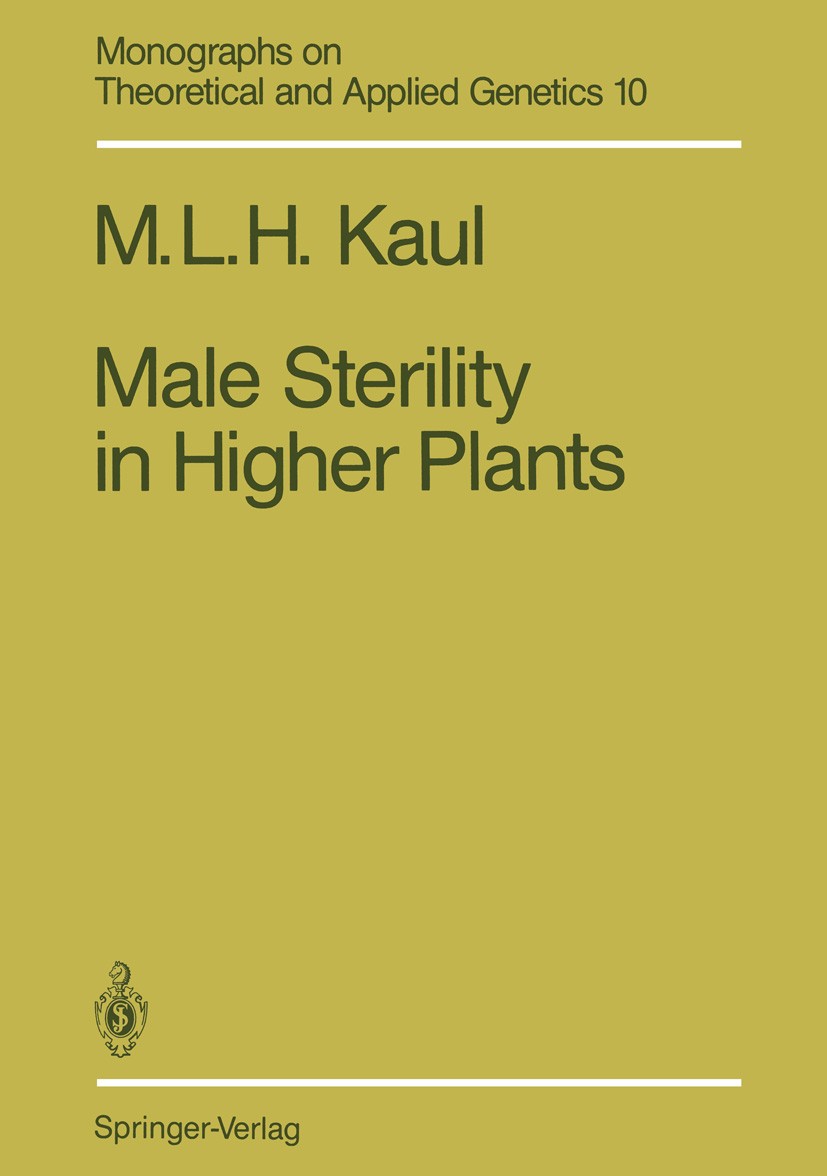| 书目名称 | Male Sterility in Higher Plants | | 编辑 | Mohan L. H. Kaul | | 视频video | http://file.papertrans.cn/622/621942/621942.mp4 | | 丛书名称 | Monographs on Theoretical and Applied Genetics | | 图书封面 |  | | 描述 | " . . . . . . Nature has something more in view than that its own proper males should fecundate each blossom. " Andrew Knight Philosophical Transactions, 1799 Sterility implicating the male sex solely presents a paradoxical situation in which universality and uniqueness are harmoniously blended. It maintains a built-in outbreeding system but is not an isolating mechanism, as male steriles, the "self-emasculated" plants, outcross with their male fertile sibs normally. Both genes (nuclear and cytoplasmic) and environment, individually as well as conjointly, induce male sterility, the former being genetic and the latter nongenetic. Genetic male sterility is controlled either exclusively by nuclear genes (ms) or by the complementary action of nuclear (lr) and cytoplasmic (c) genes. The former is termed genic and the latter gene-cytoplasmic male sterility. Whereas genic male sterility exhibits Mendelian inheritance, gene-cytoplasmic male sterility is non-Mendelian, with specific transmissibility of the maternal cytoplasm type. Genetic male sterility is documented in 617 species and species crosses com prising 320 species, 162 genera and 43 families. Of these, genic male sterility occur | | 出版日期 | Book 1988 | | 关键词 | Chenopodiaceae; Compositae; Ericaceae; Euphorbiaceae; Gramineae; Iridaceae; Malvaceae; Primulaceae; Rosaceae | | 版次 | 1 | | doi | https://doi.org/10.1007/978-3-642-83139-3 | | isbn_softcover | 978-3-642-83141-6 | | isbn_ebook | 978-3-642-83139-3Series ISSN 0341-5376 | | issn_series | 0341-5376 | | copyright | Springer-Verlag Berlin Heidelberg 1988 |
The information of publication is updating

|
|
 |Archiver|手机版|小黑屋|
派博传思国际
( 京公网安备110108008328)
GMT+8, 2025-11-17 04:26
|Archiver|手机版|小黑屋|
派博传思国际
( 京公网安备110108008328)
GMT+8, 2025-11-17 04:26


